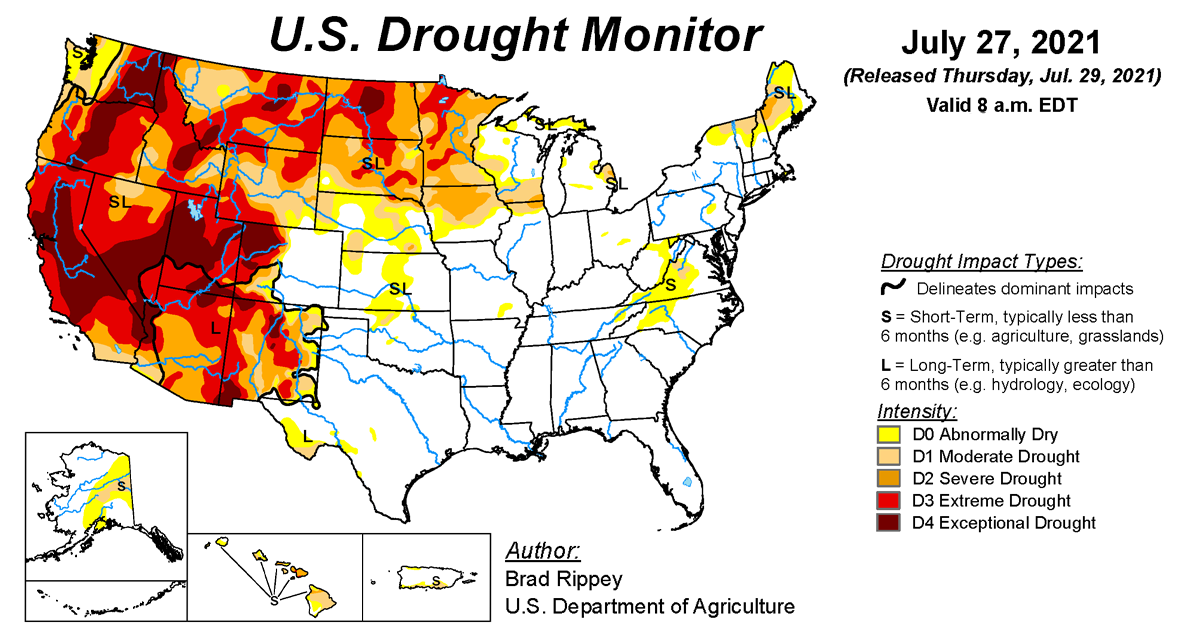
According to the July 27, 2021, U.S. Drought Monitor, moderate to exceptional drought covers 39.7% of the United States including Puerto Rico, a decrease from last week’s 40.1%. The worst drought categories (extreme to exceptional drought) decreased slightly from 21.4% last week to 21.3%.
A strong ridge of high pressure continued its stranglehold over the western to central contiguous United States. The ridge deflected Pacific storm systems away from the West and Plains, and kept the northern Plains to Upper Midwest and parts of the West warmer than normal.
An active monsoon gave the Southwest above-normal precipitation and cooler-than-normal temperatures. Cool fronts moved from the Midwest to the East Coast, and occasionally dipped into the South, bringing cooler-than-normal temperatures and pockets of above-normal precipitation to these regions.
Outside of the Southwest, however, much of the contiguous United States was drier than normal for the week. Drought and abnormal dryness contracted in parts of the Northeast and western Texas, and reduced in intensity in the Southwest, where beneficial rains fell. But drought and abnormal dryness intensified or expanded where little to no rain fell in northern parts of the West, northern Plains to Upper Mississippi Valley, central Plains, central Appalachians, and California. Overall, contraction exceeded expansion, with the nationwide moderate to exceptional drought area decreasing this week.
Abnormal dryness and drought are currently affecting over 91 million people across the United States including Puerto Rico—about 29.5% of the population.

The full U.S. Drought Monitor weekly update is available from Drought.gov.
In addition to Drought.gov, you can find further information on the current drought as well as on this week’s Drought Monitor update at the National Drought Mitigation Center.
The most recent U.S. Drought Outlook is available from NOAA’s Climate Prediction Center and the U.S. Department of Agriculture provides information about the drought’s influence on crops and livestock.
For additional drought information, follow #DroughtMonitor on Facebook and Twitter.



